- Iran
- Israel-Hamas
-
Topics
FeaturedIntroduction Over the last several decades, governments have collectively pledged to slow global warming. But despite intensified diplomacy, the world is already facing the consequences of climate…
-
Regions
FeaturedIntroduction Throughout its decades of independence, Myanmar has struggled with military rule, civil war, poor governance, and widespread poverty. A military coup in February 2021 dashed hopes for…
Backgrounder by Lindsay Maizland January 31, 2022
-
Explainers
FeaturedDuring the 2020 presidential campaign, Joe Biden promised that his administration would make a “historic effort” to reduce long-running racial inequities in health. Tobacco use—the leading cause of p…
Interactive by Olivia Angelino, Thomas J. Bollyky, Elle Ruggiero and Isabella Turilli February 1, 2023 Global Health Program
-
Research & Analysis
Featured
Terrorism and Counterterrorism
Violence around U.S. elections in 2024 could not only destabilize American democracy but also embolden autocrats across the world. Jacob Ware recommends that political leaders take steps to shore up civic trust and remove the opportunity for violence ahead of the 2024 election season.Contingency Planning Memorandum by Jacob Ware April 17, 2024 Center for Preventive Action
-
Communities
Featured
Webinar with Carolyn Kissane and Irina A. Faskianos April 12, 2023 Academic and Higher Education Webinars
-
Events
FeaturedJohn Kerry discusses his work as U.S. special presidential envoy for climate, the challenges the United States faces, and the Biden administration’s priorities as it continues to address climate chan…
Virtual Event with John F. Kerry and Michael Froman March 1, 2024
- Related Sites
- More
Far-Right Terrorism in the United States
In recent years, far-right terrorism has become a leading national security concern for the United States. However, this type of violence and the extremism that inspires it are far from new, as explored in the new book Gods, Guns, and Sedition: Far-Right Terrorism in America by CFR experts Bruce Hoffman and Jacob Ware.
The far right has been gaining momentum for decades, helping to proliferate conspiracy theories and ideologies such as white supremacism, antisemitism, and anti-government extremism, which have fueled an increasing number of violent incidents.



Formation of the Ku Klux Klan

The Civil War between the pro-slavery South and anti-slavery North ends, and disgruntled veterans of the South’s defeated Confederate Army form the first iteration of the Ku Klux Klan (KKK) in Pulaski, Tennessee. Nathan Bedford Forrest, a former Confederate general, becomes the Klan’s first grand wizard, its national leader. The KKK’s declared goal is “to maintain the supremacy of the White Race in the Republic.” The first Klan was active from 1865 until 1871 and played a major role in the South’s postwar Reconstruction era, fighting to oppress the previously enslaved African American populace and engaging in acts of violence against them.
Bombing of Sixteenth Street Baptist Church
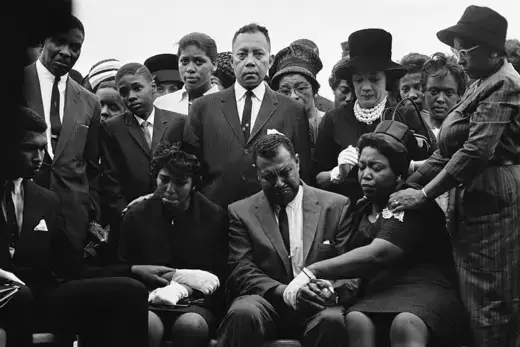
The church bombing in Birmingham, Alabama, is coordinated by the local chapter of the KKK, which by now is in its third iteration and popular across the South. The bombing of the predominately Black congregation kills four young girls, becoming one of the defining racist attacks of the civil rights era. Between 1947 and 1965, the KKK is linked to upward of fifty dynamite explosions targeting African Americans in Birmingham, Alabama—earning the city the grim nickname “Bombingham.”
Assassination of Martin Luther King
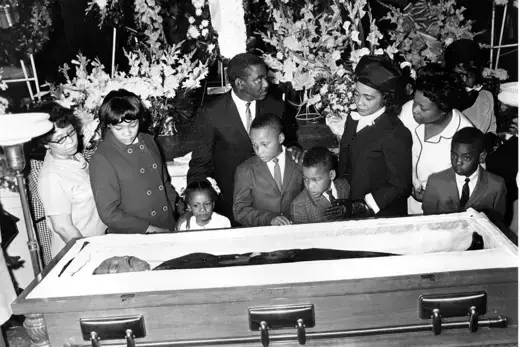
James Earl Ray, a fugitive with multiple past convictions, shoots and kills Reverend Martin Luther King Jr., a leader of the civil rights movement of the 1950s and 1960s, at a motel in Memphis, Tennessee. Ray was a supporter of racial segregation and a white supremacist. King’s death is mourned by millions of Americans and considered a low point in the civil rights movement.
Publishing of ‘The Turner Diaries’

William Luther Pierce, a former college physics professor and a prominent neo-Nazi, publishes The Turner Diaries under the pseudonym Andrew Macdonald. The dystopian novel tells the story of a violent overthrow of the federal government, which leads to a nuclear conflict and race war. Notably, the book’s hero, Earl Turner, detonates a bomb at the FBI’s headquarters in Washington, DC. The book is advertised with the slogan, “What will you do when they come to take your guns?” The novel comes to resonate with far-right groups in the decades ahead.
Formation of the Aryan Nations

Notorious neo-Nazi Pastor Richard Butler forms the Aryan Nations in Idaho. A small but committed group, its followers subscribe to the so-called Christian Identity doctrine, believing they are God’s true “chosen people,” a designation usually that refers to Jews. They believe a racial war is imminent between Aryan (white) people and Jews and nonwhites, one that they must prepare for and win. Through its annual World Congresses, the Aryan Nations inspires the creation of the terrorist group called the Order.
End of The Order
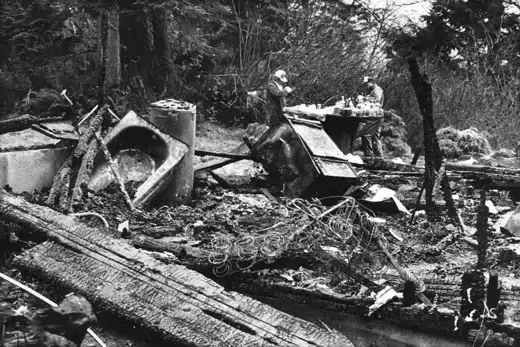
Federal law enforcement officials track Robert Mathews, leader of The Order, to a small house on the state of Washington’s Whidbey Island. Mathews, wanted on murder and robbery charges, refuses to surrender, and a gunfight and standoff ensue, during which he’s killed in a fire. With his death, Mathews becomes a martyr for the far right.
Fort Smith Sedition Trial
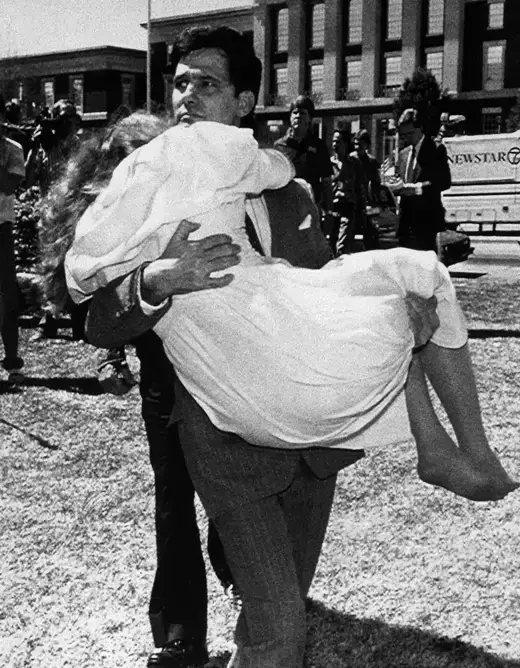
Federal prosecutors bring fourteen white supremacists to trial at Fort Smith, Arkansas. They stand accused of plots against the U.S. government (seditious conspiracy) and other violent crimes. An all-white jury acquits all of them. Afterward, defendant Louis Beam, a former KKK leader and later the “ambassador-at-large” for the Aryan Nations, focuses on building a base of support for a white supremacist revolution against the “Zionist-Occupied Government.” To this end, Beam founds a publication called the Seditionist, which promotes his concept of “leaderless resistance.” This revolution strategy argues that guerrilla warfare should be pursued through individual or small cells, not hierarchical organizations.
Standoff at Ruby Ridge

A large contingent of federal agents descend on a small home in Idaho to arrest Aryan Nations member Randy Weaver on unresolved firearms charges. After Weaver refuses to surrender, the ensuing eleven-day standoff and siege results in the shootout deaths of Weaver’s son, wife, and dog, as well as a federal officer. Weaver ends up surrendering, but his family become martyrs for the movement, and the standoff captures the attention of far-right Americans nationwide.
Waco Siege
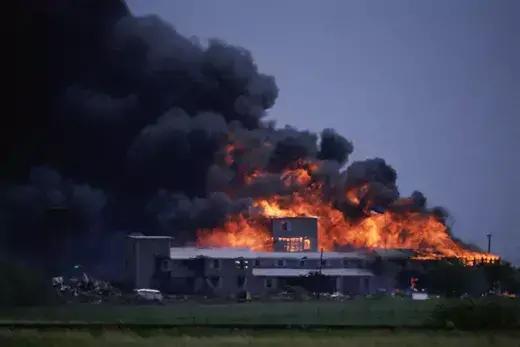
Federal agents besiege Mount Carmel Center, a compound near Waco, Texas, where residents are suspected of illegally selling machine guns and stockpiling weapons. The compound is home to the Branch Davidians, a religious cult led by David Koresh. When agents try to serve a search warrant, a gunfight breaks out, leaving ten people dead, including four federal officers. A nearly two-month standoff ensues, which ends when federal agents launch an assault on the compound. During the raid, a fire starts, and the compound burns to the ground, killing seventy-six Branch Davidians, including David Koresh and many women and children. Ruby Ridge and Waco both fuel anti-government conspiracy theories by alleging that a predatory government seeks to infringe on individual liberties.
Oklahoma City Bombing
An anti-government extremist and military veteran named Timothy McVeigh detonates a truck bomb at the Alfred P. Murrah Federal Building in Oklahoma City, Oklahoma, killing 168 people and injuring hundreds more. The act is directly tied to the government crackdowns at Ruby Ridge and Waco, with McVeigh launching his attack on the second anniversary of the Waco siege. The Oklahoma City bombing is the deadliest domestic terrorist attack in modern U.S. history and leads to a sweeping government crackdown on armed militias, with federal law enforcement agencies significantly raising their efforts to infiltrate anti-government extremist groups. The militia movement therefore suffers a substantial blow in the late 1990s. McVeigh is executed for his crimes in 2001, while a co-conspirator, Terry Nichols, is still serving out a life sentence in prison as of 2024.
Election of Barack Obama
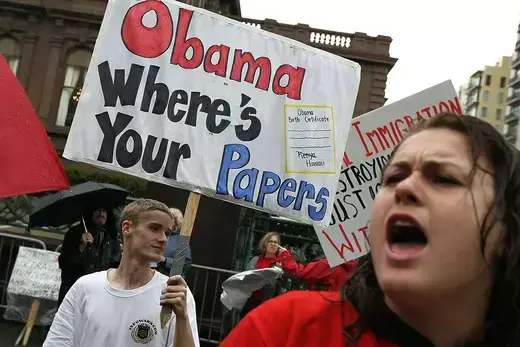
A resurgence of racism and anti-government extremism surfaces with the November election of Barack Obama, the country’s first African American president. Some political opponents and conspiracy theorists allege that Obama is Muslim and foreign-born, falsehoods that they hoped would undermine his presidency and disqualify him from office.
American-Inspired Attacks in Norway
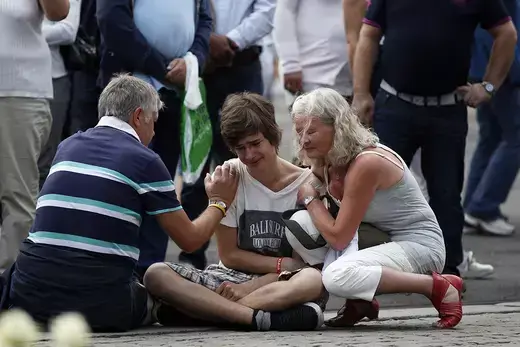
Anders Breivik, a far-right extremist seeking to emulate Timothy McVeigh, kills seventy-seven people in twin attacks in Oslo, Norway. He murders eight with a truck bomb in the capital’s government quarter, and then drives to a nearby island—home to the summer camp of the youth wing of the country’s Labour Party—where he indiscriminately guns down sixty-nine more victims. Breivik wrote a long manifesto accompanying his attack, calling his targets “cultural Marxists” who he felt were orchestrating the cultural and demographic replacement of Norwegians who shared his European heritage.
Charleston AME Church Shooting

White supremacist Dylann Roof opens fire at the “Mother” Emanuel African Methodist Episcopal (AME) Church in Charleston, South Carolina, killing nine African American worshippers. The church is known for hosting civil rights icons over the decades, including Martin Luther King Jr. During the attack, Roof tells victims, “I have to do it. You rape our women, and you’re taking over our country. And you have to go.”
Election of Donald Trump
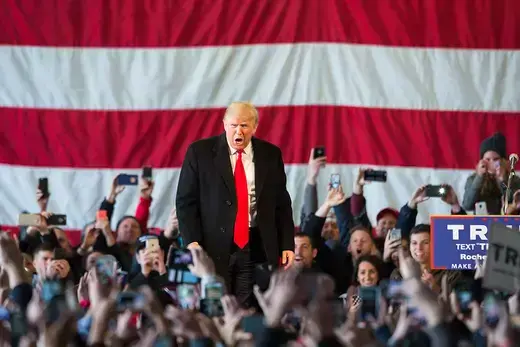
Donald Trump is elected president of the United States running as a Republican. Trump’s campaign had featured some far-right themes on immigration and race, and made proposals including a Muslim ban, a possible Muslim registry, and a border wall to keep out “rapist” and “criminal” Mexicans. To many Americans, his election victory proves that far-right rhetoric and policies that for decades had been associated only with extremists could resonate with wider swathes of the electorate, enough to actually win the White House.
Charlottesville Car-Ramming
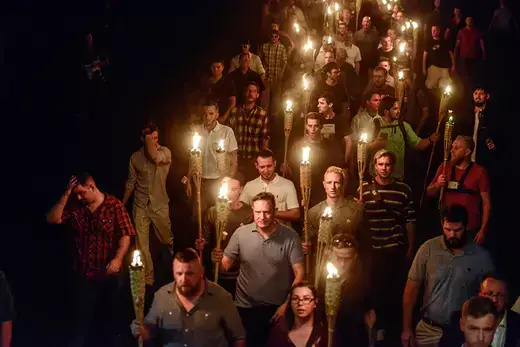
On August 11, a “Unite the Right” rally against the removal of a statue of Confederate commander Robert E. Lee in Charlottesville, Virginia, begins with a torchlight procession at the University of Virginia amid chants that “Jews will not replace us.” The following day, the protests turn more violent when James Alex Fields Jr., a twenty-year-old neo-Nazi who had traveled from Ohio for the rally, rams his car into a crowd of counter-demonstrators, injuring twenty-eight and killing one. In the wake of the incident, President Trump refused to condemn the rally, stating that there were “very fine people on both sides.” This statement, coupled with the president’s widely criticized handling of the crisis, provides a significant fillip for Americans on the far right, who see Trump as an ally in the White House.
Tree of Life Synagogue Shooting

Robert Bowers, a forty-six-year-old local man, guns down eleven Jewish worshippers, most of them elderly, at the Tree of Life synagogue in Pittsburgh, Pennsylvania. Bowers presaged his attack with antisemitic and anti-immigrant posts on the social-networking site Gab, writing, “HIAS [Hebrew Immigrant Aid Society] likes to bring invaders in that kill our people. I can’t sit by and watch my people get slaughtered. Screw your optics, I’m going in.” Bowers was aggrieved about alleged migrant “caravans” coming from Central America, which he believed were being orchestrated by Jewish nonprofit organizations such as HIAS Bowers is sentenced to death in 2023 for the attack, and he remains on death row.
Christchurch Shootings
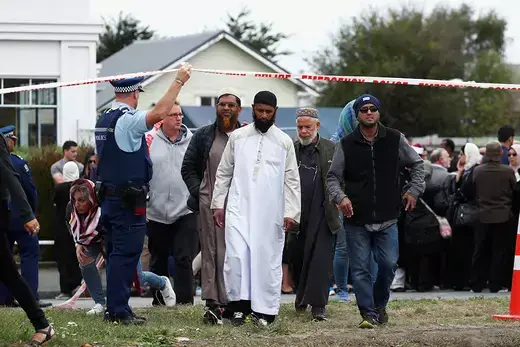
During a twenty-minute rampage in Christchurch, New Zealand, gunman Brenton Tarrant murders fifty-one worshippers in two mosques. Seeking to inspire emulation of this violence, Tarrant livestreams most of the carnage on the internet, where it is viewed more than a million times—thus redefining far-right terrorism in the twenty-first century. Tarrant had been active in an eclectic and radical online space that trafficked in extremist ideologies about race, immigration, and environmental degradation. Mimicking Breivik, Tarrant explained his views in a seventy-four-page manifesto. His attack is inspired by U.S. conspiracy theories (including over guns), and in turn inspires follow-on attacks in the United States.
COVID-19, Racial Justice, and the ‘Big Lie’
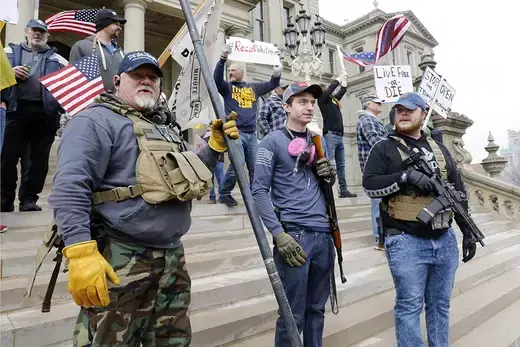
The COVID-19 pandemic and ensuing government “lockdowns” in many jurisdictions provide renewed impetus to extremists across the far-right spectrum, offering perceived proof for many of their conspiracy theories and leading to spikes in online radicalization. Nationwide racial justice protests, catalyzed by the killing of George Floyd, also reenergize far right Americans, some of whom gather in armed counterprotests to “defend” police and businesses from rioting and looting. In the most notable flash of violence, Air Force Sergeant and “boogaloo” adherent Steven Carrillo perpetrates twin attacks in May and June 2020 that kill a federal officer and sheriff’s deputy in California. Both before and after his November 2022 election loss to Joe Biden, President Trump repeatedly airs unfounded concerns over mail-in ballot voting and repeats the falsehood that the election was “stolen.”
Riots at the U.S. Capitol Building

On January 6, 2021, a mob storms the U.S. Capitol, driven by Trump-fueled conspiracy theories about the 2020 presidential election. It the first such attack on the institution since British invaders set fire to the Capitol in 1814. Participants erect a gallows outside the building, imagery evoking “The Day of the Rope” from The Turner Diaries, which presaged a nationwide revolt. In the aftermath, federal prosecutors secure seditious conspiracy convictions against several planners of the assault, succeeding where their 1988 counterparts had failed in proving that the defendants intended to violently overthrow the U.S. government.
 Online Store
Online Store